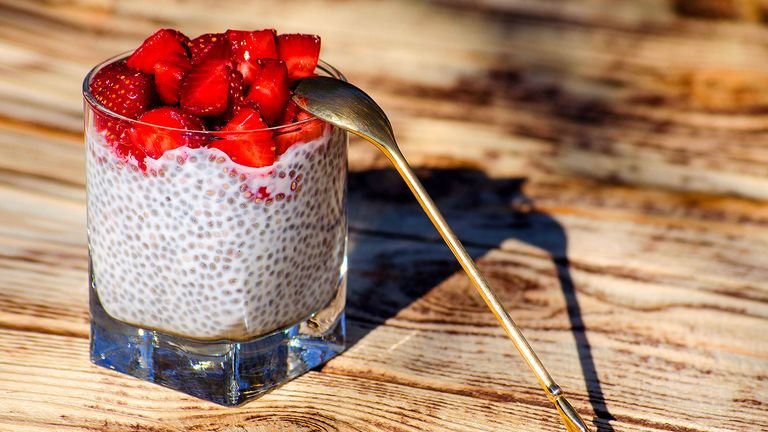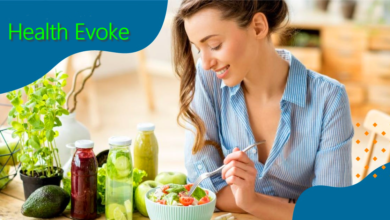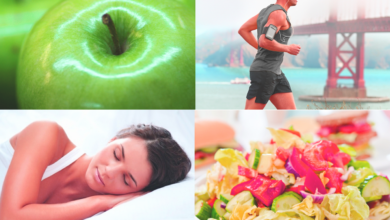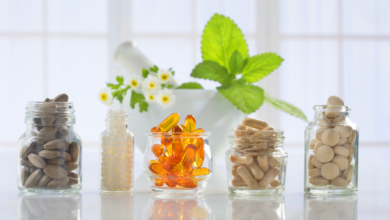8 Healthy High-Protein Snacks to Help You Power Through the Day in 2024

When you realize that your last meal was a bit too light — and your next meal is still a ways off — which snacks are smart choices?
A good snack will contain at least some protein to help keep you full, explains Mary Wirtz, RDN, a Colorado–based nutritional consultant at Mom Loves Best. “Protein takes longer to digest than carbohydrates, so it therefore keeps us satisfied and satiated,” she says. And the longer you keep hunger at bay, the less likely you’ll be to reach for another snack, so it’s a good way to keep calories in check, she adds.
Protein’s ability to help keep you full longer than other macronutrients may explain why high-protein diets like paleo have become so popular. Replacing half of your fat calories with protein can be helpful for weight loss, particularly decreasing fat while preserving lean muscle, according to a study. As a result, high-protein, low-fat diets may also help prevent chronic conditions related to obesity, such as metabolic syndrome, nonalcoholic fatty liver disease, type 2 diabetes, and cardiovascular diseases.
Of course, there is also evidence that high-protein diets may contribute to cardiovascular disease and shorter life spans, according to research. People who eat very high protein diets also have an increased risk of kidney stones, according to one study.
The source of the protein you’re eating plays a factor in many of these adverse health effects. Some foods that pack a lot of punch when it comes to grams of protein per calorie, like red meat or full-fat cheese, can also serve up a lot of saturated fat, which should be eaten in moderation. For these reasons, proteins from whole plants, which tend to be lower in saturated fat, are often recommended.
In fact, a meta-analysis concluded that bumping up the percentage of total daily calories that come from plant protein by just 3 percent was associated with a 5 percent lower risk of premature death. Another study found that replacing 3 percent of the calories in your diet from animal proteins with plant proteins corresponded with a 10 percent decrease in death from any cause over that period, for both men and women.
There is still some debate about how much protein it’s healthy to eat. Some recommendations are based on body weight (0.8 grams of protein per kilogram of ideal body weight), others say that 10 percent of the calories you eat in a day should come from protein, while still others give amounts in grams for men and women, reports Harvard Health Publishing. Sex, age, height, and activity level all affect your protein needs as well. In fact, data shows that one-third of Americans age 50 and older don’t get enough protein, according to research.
The findings also indicate that it’s best to spread your protein intake out over the day, which is why high-protein snacks are a good idea. Here are eight options with 6 grams (g) or more per serving.
1
Hard-Boiled Eggs Are Low in Calories and High in Protein
For years, eggs got a bad rap because of their high cholesterol content. However, that thinking has recently changed. More recent research found that dietary cholesterol had little influence on blood levels of total and “bad” LDL cholesterol. Saturated fat in the diet can cause your liver to make lots of cholesterol.
Additionally, according to the Mayo Clinic, it’s the preparation methods we use (like fried in oil or butter) and the high-saturated-fat foods we eat along with the eggs (like bacon, sausage, and ham) that actually increase the risk of heart disease — not eggs themselves.
Still, the U.S. Department of Agriculture (USDA) 2020–2025 Dietary Guidelines for Americans recommends eating as little dietary cholesterol as possible (though doesn’t set specific limits). So you may want to limit yourself to one whole egg per day, per a meta-analysis.
One large whole egg has 1.6 g of saturated fat, plus 6 g of protein, 207 milligrams of cholesterol, and only 72 calories, per the USDA.
One of the simplest ways to enjoy eggs as a snack is to eat them hard-boiled. Keep a bowl of them in your fridge for an instant healthy snack that’s easy to take with you.
2
Nuts Have Protein, Plus Good-for-You Fats
Whether you’re a fan of peanuts, almonds, cashews, walnuts, or pistachios, whole nuts are a healthy, high-protein snack choice. Plus, nuts are high in fiber, which also keeps you feeling full longer. According to the Mayo Clinic, high-fiber foods tend to take longer to eat and fill you up with fewer calories than low-fiber foods.
While nuts are chock-full of heart-healthy fats, it’s still important to measure out portions, as they’re a calorie-dense food, notes the Cleveland Clinic. Be sure to stick to 1 ounce — about a handful. Peanuts have the highest protein count, at 7 g per ounce, research shows, but most nuts have at least 6 g.
Greek Yogurt Is Thick, Creamy, and Full of Protein
Greek yogurt has become a supermarket staple. Strained to remove the whey, Greek yogurt is thicker and creamier than regular yogurt, making it a satisfying snack option, according to one review. And it’s higher in protein than regular yogurt: 8 ounces of plain low-fat yogurt offers 13 g, according to the USDA, whereas an equal serving of plain low-fat Greek yogurt packs more than 20 g, per the USDA.
Enjoy plain Greek yogurt as a base for fresh fruit, cereal, or nuts.
4
Cottage Cheese Is Heavy on Protein but Light on Calories

Low-fat cottage cheese has long been a staple on the grocery lists of health-conscious shoppers, and for good reason: It’s an excellent source of protein, with 14 g of protein per ½ cup, and it has less than 100 calories per serving, per the USDA. Paired with diced fruit or veggies for dipping, or on its own, it makes a terrific snack that will hold you over between meals.
5
Black Bean Dip: The Protein Pick That Will Cure Your Craving for Something Salty, Too
Beans are an easy go-to when you need a protein boost (plus they have filling fiber), and when mashed or blended, they make a snack-worthy dip. Black beans are a tasty option with almost 8 g of protein per ½ cup, per the USDA. Or opt for cannellini beans with nearly 8 g per ½ cup, USDA data shows.
Simply combine drained and rinsed beans, chopped onion, minced garlic, chopped cilantro, lime juice, and your favorite seasonings in a blender. When the munchies hit, enjoy ½ cup with veggie stick dippers for a filling snack.
6
Celery and Nut Butter Snacks Is Not Just for Kids
This savory veggie-nut combo is also a fiber and protein win. While peanut butter is a tried-and-true favorite (add raisins for the classic ants on a log), a slew of other nut butters are available, including almond and sunflower butters.
Nut butters are high-protein foods, with 2 tablespoons providing about 7 g of protein (for peanut butter), per the USDA. And though nut butter does contain fat, it’s the good-for-you unsaturated kind, which may lower blood pressure and reduce your risk of heart disease, according to Harvard Health Publishing.
Choose natural nut butters to skip the added saturated fats and sugars. Enjoy the spreads on celery (or carrots or other veggies) to help keep calories in check.
7
Edamame: The High-Protein Snack Made for Mindful Eating

Half a cup of cooked edamame, or fresh soybeans, contains 9 g of protein (plus high-quality fiber), per the USDA, making for a satisfying 112-calorie snack. Try them in the pod sprinkled with a touch of sea salt. Pinch the beans from the pods as you go, which is a fun option to help slow down your eating, giving your brain time to register that you’re full — you’ll ultimately eat less.
8
Chia Seed Pudding: Because Jell-O Doesn’t Have Omega-3

Like many seeds, chia seeds are nutritionally dense, with nearly 10 g of fiber per ounce and plenty of calcium, per the USDA. What makes them somewhat unique is that they are also a rich source of omega-3 fatty acids, an important nutrient that reduces inflammation and also reduces the risk of cardiovascular diseases, according to the Harvard T.H. Chan School of Public Health.
And they are super absorbent: When soaked in liquid, they produce a gel-like substance that has a consistency similar to pudding. For a nutritious snack that’s fun to eat, try Wirtz’s recipe: Mix 2 tablespoons of chia seeds with 4 ounces of nonfat milk or a high-protein milk alternative, stir in 1 teaspoon of pure maple syrup or honey, and refrigerate for 1 to 2 hours. To serve, top with fresh or frozen berries or 1 teaspoon of unsweetened cocoa powder for a little extra flavor and fiber.
Read more: https://www.healthevoke.com/how-to-use-natural-coffee-boosters-for-a-healthier-morning/







